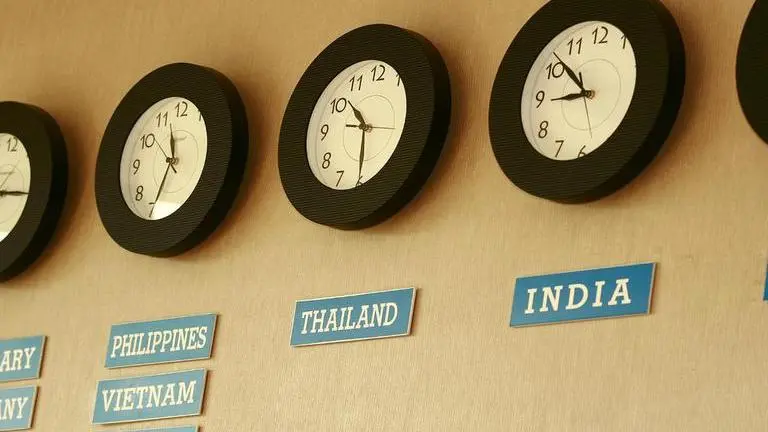Updated 1 September 2022 at 11:11 IST
Indian Standard Time: Origins of IST, Daylight Saving Time & link to ancient Hindu texts
Indian Standard Time (IST) was introduced in the country in 1947 but its true origins may date all the way back to the 4th Century CE, read ahead for more info
- India News
- 3 min read

Seventy-five years ago today on September 1, 1947, Indian Standard Time, also referred to as IST was officially introduced in the country. The IST phenomenon which is observed throughout the country has a rather exhilarating history dating all the way back to the 4th century CE. However, it wasn’t until 1947 that India adopted it with a time offset of UTC+5:30 (Coordinated Universal Time), which means India is five and a half hours ahead of GMT (Greenwich Mean Time).
The Surya Siddhanta book which is one of several astronomy-related Hindu texts represents a functional system that made reasonable predictions and calculations about the moon and various planets and their constellations. The text itself was composed on palm-leaf manuscripts and updated periodically with new information. The Surya Siddhanta book which was written several centuries ago stated that a day started with sunrise, regardless of the time and would be divided into smaller time units.
History of time zones in India
India first received a cohesive time zone by British astronomer John Goldingham in 1802, who established Chennai as the centre of his activities and his measurement which followed GMT implied that India’s day began at midnight, instead of the normal practice of sunrise. This launch, however, did not catch on and most cities continued to rely on their own local measurement system, primarily the one based in Ujjain. But his observatory in Chennai later grew into the Guindy Engineering College and finally the prestigious Anna University.
In 1884, when Kolkata and Mumbai became bigger trading centres for the British they were also established as time zones, tuned to the GMT. In the year 1905, the meridian which was passing east of Allahabad was announced as a standard time zone for the country and in 1947, this was declared IST.
Advertisement
The Indian government despite declaring IST as the official time for the entire country, continued to maintain different time zones for Kolkata and Mumbai. The central government also relocated the national observatory from Chennai to Mizoram so that it would be closer to UTC 5:30. Although India does not observe Daylight Saving Time, that system was also adopted briefly during the Sino-Indian war in 1962 and the Indo-Pak wars in 1965 and 1971, to reduce energy consumption.
What is Daylight Saving Time?
DST is the practice of setting the clocks forward one hour from standard time during the summers and then back again during autumn. It is known to create one hour of additional daylight but does not save energy and is known to disrupt body clocks and circadian rhythm. As a result of this, there is one 23-hour day in late winter or early spring and one 25-hour day in autumn. It was Benjamin Franklin who first proposed this idea in what appears to be a satirical letter to the editor of The Journal of Paris, suggesting that waking up earlier in the summer would economise on candle usage; and lead to considerable savings. Nearly 120 years later in 1907, UK's William Willett presented the idea as a way to save energy in the parliament and it was implemented.
Advertisement
Published By : Pragadish Kirubakaran
Published On: 1 September 2022 at 11:07 IST
